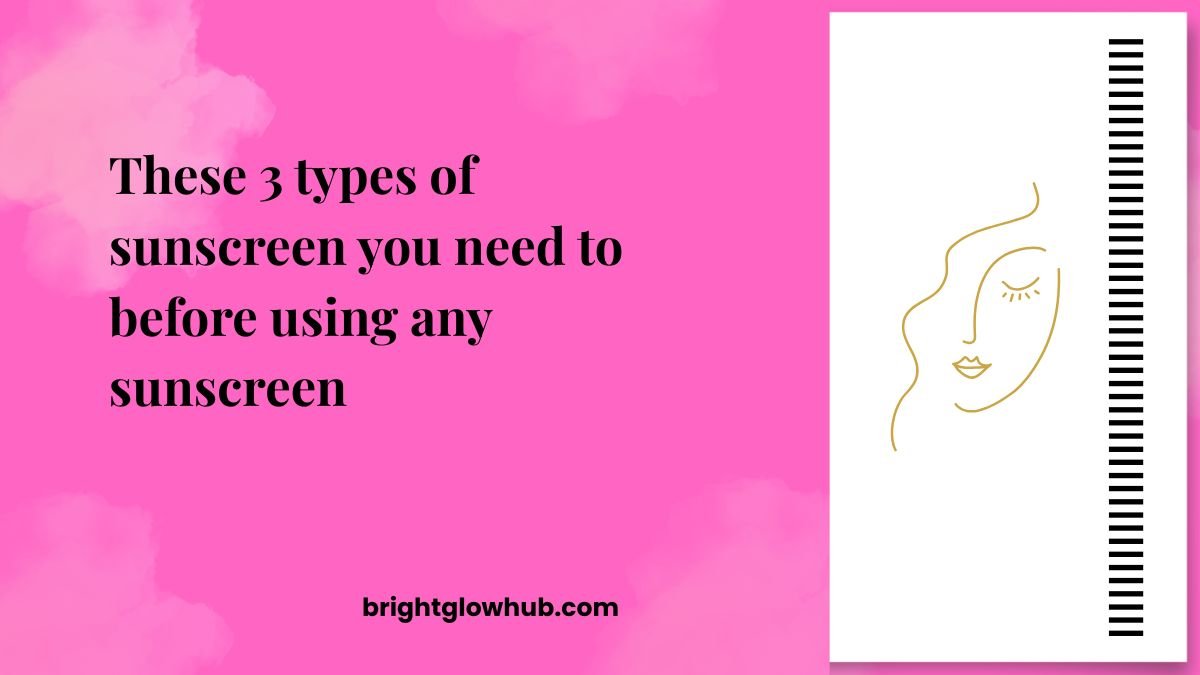Table of Contents
When it comes to sunscreen, the endless options on store shelves can leave anyone confused. From sprays to lotions to sticks — each promises protection from the sun’s harmful UV rays, but which one truly suits your skin and lifestyle? Let’s break down the difference between spray, lotion, and stick sunscreen so you can make the right choice for your daily routine.
☀️ Why Sunscreen Type Matters
No matter how advanced your skincare routine is, sunscreen is your ultimate defense against sun damage, premature aging, and skin cancer. But the form you choose — whether spray, lotion, or stick — affects how well it protects your skin.
Choosing the right sunscreen formulation depends on:
- Your skin type (oily, dry, or sensitive)
- The environment (beach, gym, office, outdoors)
- Your application preference (quick spray vs. creamy lotion)
Guide : How Sunscreen Works on Skin: A Complete Guide to Sun Protection
💧 Lotion Sunscreen: The Classic All-Rounder
What It Is:
Lotion sunscreens are the most common and widely recommended type. They’re creamy, hydrating, and easy to apply evenly on the skin.
Best For:
- Dry or normal skin types
- Full-body coverage
- Everyday use
Pros:
- Offers even coverage when applied properly
- Contains moisturizing ingredients like aloe vera, glycerin, or ceramides
- Ideal for both face and body
Cons:
- Can feel sticky or greasy on oily skin
- Takes a few minutes to absorb
🌬️ Spray Sunscreen: The Quick & Convenient Option
What It Is:
Spray sunscreens are aerosols that distribute sunscreen in a fine mist, making them super convenient for reapplication — especially when you’re on the go.
Best For:
- Active individuals who need fast, mess-free protection
- Hard-to-reach areas like the back or shoulders
- Outdoor activities like sports or swimming
Pros:
- Lightweight and non-greasy
- Quick to apply and reapply
- Doesn’t leave a white cast
Cons:
- Easy to miss spots, leading to uneven protection
- Inhalation risk if sprayed too close to the face or in windy conditions
Pro Tip: Always rub the spray in after applying — it ensures even coverage!
🧴 Stick Sunscreen: The Compact Protector
What It Is:
Stick sunscreens are solid balms that glide directly onto the skin, perfect for small areas or touch-ups throughout the day.
Best For:
- Sensitive areas like the face, lips, or under the eyes
- On-the-go protection (fits easily in your pocket or purse)
- Kids and travelers
Pros:
- No mess, no leaks — great for daily commutes or travel
- Precise application for small or sensitive areas
- Often water-resistant
Cons:
- Hard to cover large body areas
- May feel heavy on oily or acne-prone skin
Guide : How to use stick and spray sunscreens
⚖️ Comparison: Spray vs Lotion vs Stick Sunscreen
| Feature | Lotion | Spray | Stick |
|---|---|---|---|
| Ease of Use | Moderate | High | High |
| Coverage | Full body | Uneven if not rubbed | Targeted areas |
| Skin Type Suitability | Dry/Normal | Oily/Active | Sensitive/Combination |
| Best For | Daily use | Sports, quick use | Touch-ups, travel |
| Reapplication | 2-3 hrs | 2 hrs | 2-3 hrs |
☀️ Which Sunscreen Should You Pick?

If you’re confused about which sunscreen is best for you, here’s a quick guide:
- Choose Lotion Sunscreen if you want full coverage and deep hydration.
- Go for Spray Sunscreen if convenience and quick application matter most.
- Pick Stick Sunscreen for compact, on-the-go touch-ups or facial use.
Remember, the best sunscreen is the one you’ll actually use every day — regardless of its form. Aim for broad-spectrum SPF 30 or higher and make sunscreen a non-negotiable part of your morning routine.
Frequently Asked Questions (FAQs)
1. Which is better — spray, lotion, or stick sunscreen?
It depends on your skin type and lifestyle. Lotion sunscreens offer the best coverage and hydration, sprays are convenient for quick use and reapplication, while sticks are perfect for travel or small areas like the face and neck. The key is to choose a broad-spectrum SPF 30 or higher and use it consistently.
2. Is spray sunscreen as effective as lotion sunscreen?
Yes, spray sunscreens can be just as effective as lotions, if applied correctly. The problem is uneven application — many people miss spots or don’t rub it in. To get proper protection, spray generously, rub it into the skin, and reapply every two hours.
3. Can I use stick sunscreen on my face?
Absolutely! Stick sunscreens are great for the face, especially around sensitive areas like the eyes and nose. They’re easy to apply, mess-free, and less likely to drip into your eyes. Look for a non-comedogenic (won’t clog pores) formula if you have acne-prone skin.
4. Is lotion sunscreen suitable for oily skin?
Yes — just choose a matte-finish or gel-based lotion sunscreen designed for oily or acne-prone skin. Many modern lotion formulas are lightweight, non-greasy, and absorb quickly, giving your skin a shine-free finish.
5. Can I combine lotion and spray sunscreen?
Yes, you can! Many people use lotion sunscreen in the morning for base coverage, then reapply with a spray during the day for convenience. This combo offers both hydration and easy touch-ups without messing up your makeup or outfit.
6. Which sunscreen type lasts the longest on the skin?
Stick sunscreens tend to last longer because they adhere closely to the skin and are often water- and sweat-resistant. However, all types need reapplication every 2–3 hours for full protection.
7. What’s the best sunscreen type for everyday use?
For daily use, lotion sunscreen is usually the best option. It hydrates the skin, spreads evenly, and works well under makeup. You can use a stick or spray sunscreen for reapplication during the day or when you’re outdoors.
🌿 Final Thoughts
Whether you’re lounging at the beach, running errands, or heading to work, sunscreen is your first line of defense against UV rays. Understanding the differences between spray, lotion, and stick sunscreen helps you pick what fits your skin and lifestyle best.
